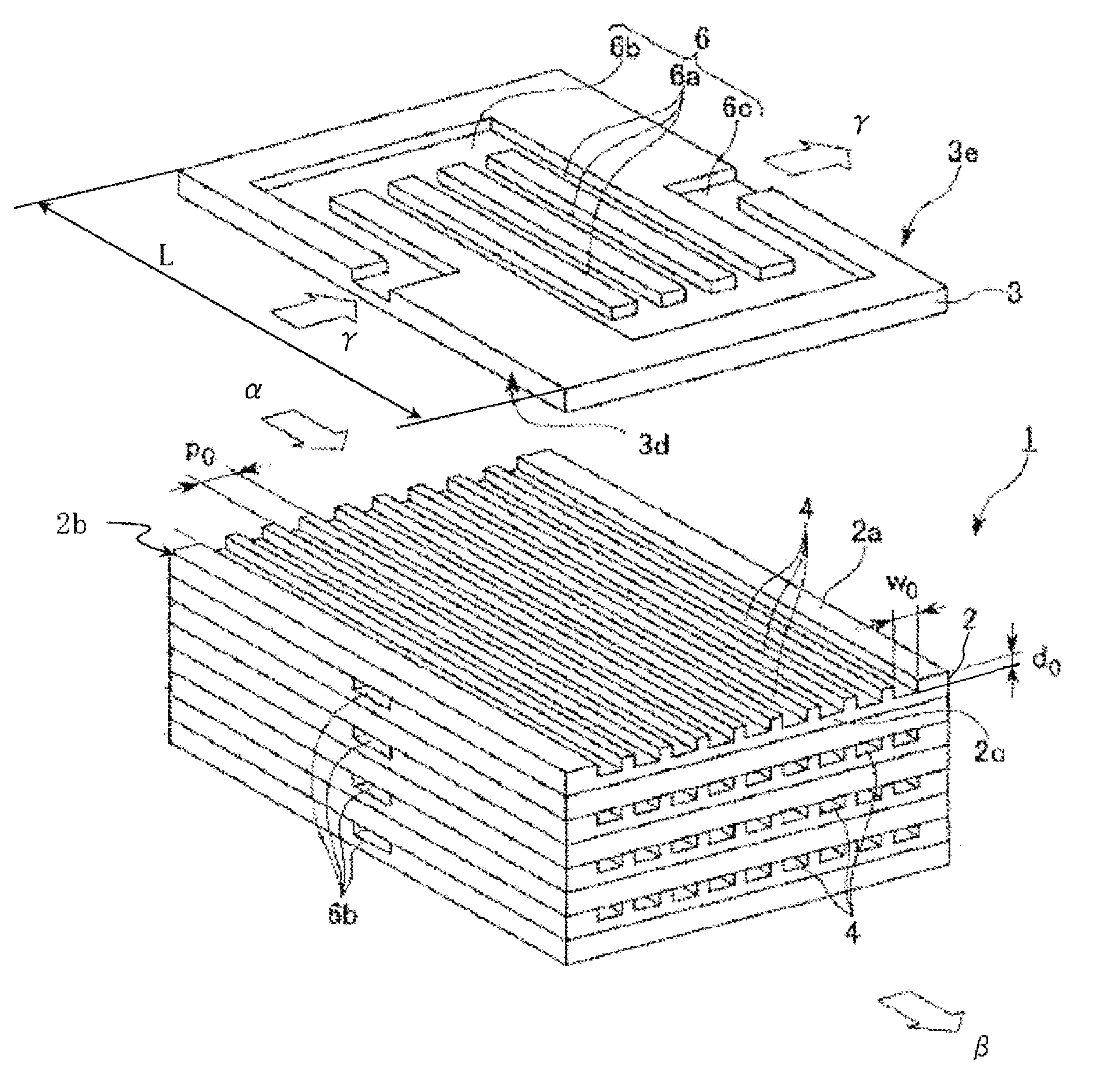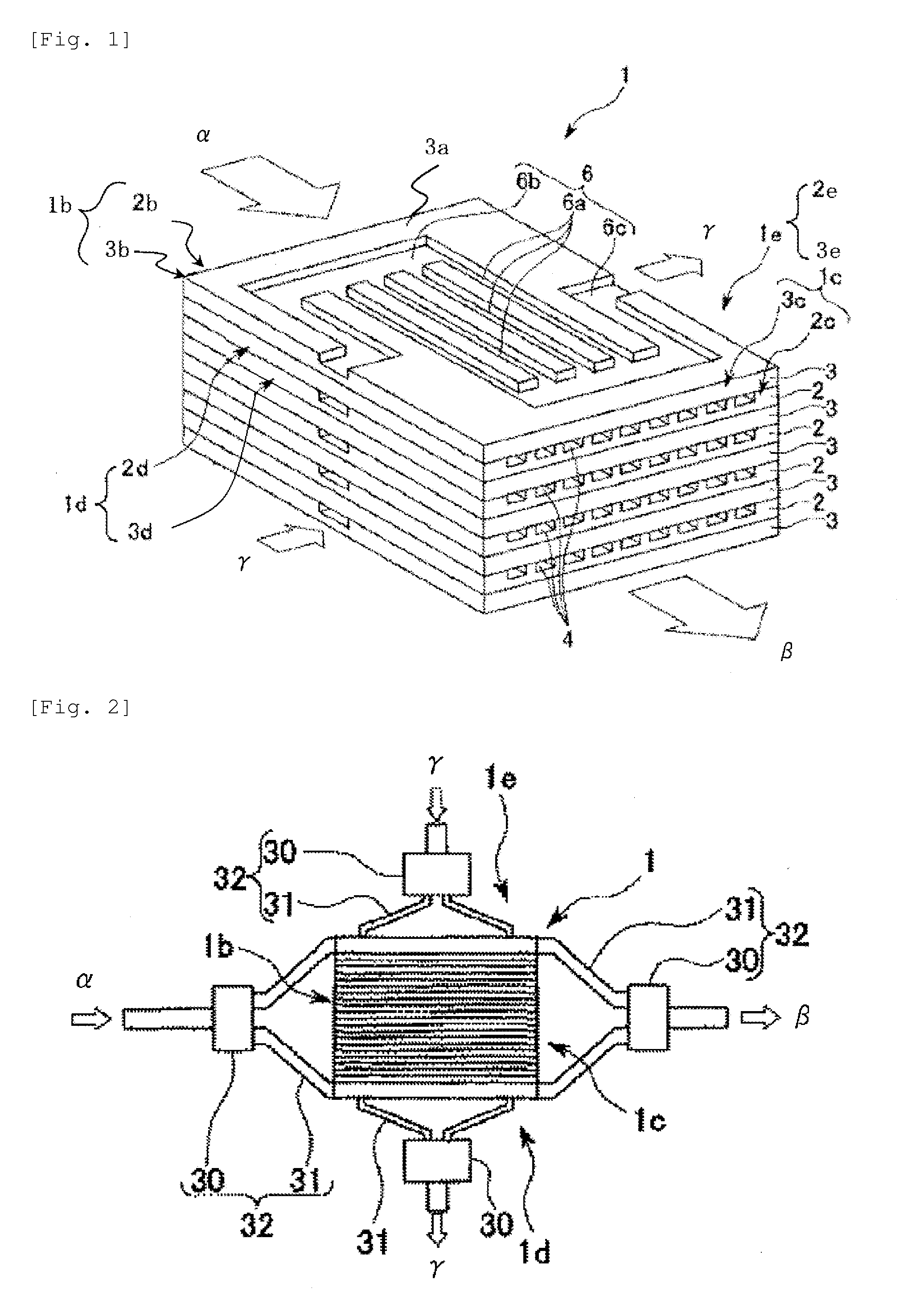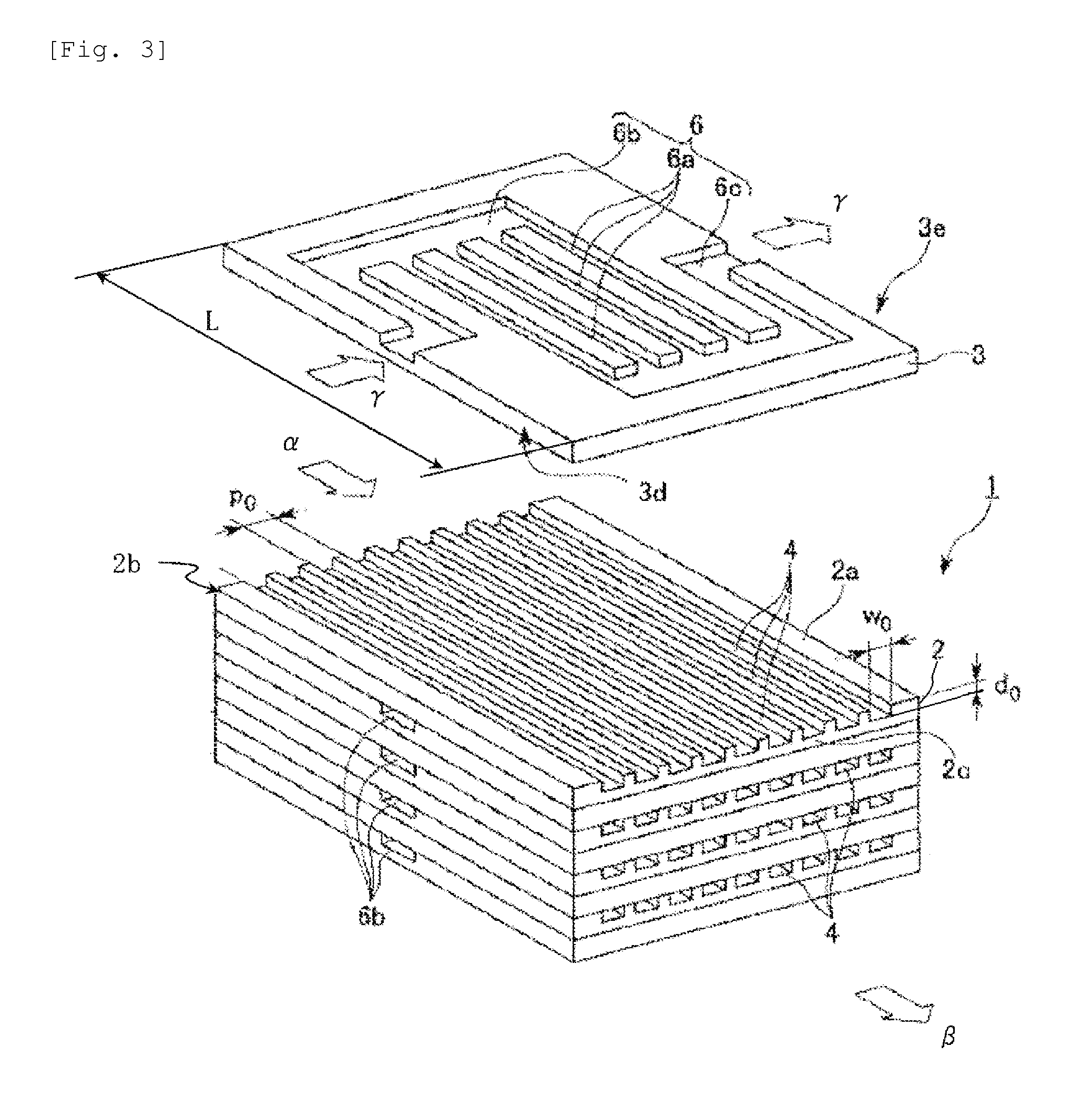Process for producing epoxy (METHA)acrylate
a technology of metal acrylate and production process, which is applied in the preparation of carbamic acid derivatives, organic compound preparation, carbamic acid derivatives, etc., can solve the problems of fatal equipment breakage, difficult to achieve, runaway reaction, etc., and achieve safe production of metal acrylate, good productivity, and the effect of reducing the cost of investmen
- Summary
- Abstract
- Description
- Claims
- Application Information
AI Technical Summary
Benefits of technology
Problems solved by technology
Method used
Image
Examples
example
[0069]The invention will be described in more detail with reference to examples below. The percentages in the examples are by weight unless otherwise indicated.
example 1
[0074]A production apparatus 80 shown in FIG. 4 having one chemical reaction device 40 connected was used. 737 g of a bisphenol A epoxy resin (epoxy equivalent: 189), 277 g of acrylic acid, 5.1 g of triphenylphosphine as a catalyst, and 0.5 g of methoquinone as a polymerization inhibitor were mixed and dissolved in advance to prepare a mixed solution 61.
[0075]The mixed solution 61 was continuously caused to flow with the syringe pump 63 through the mixer 65, the chemical reaction device 40, the cooling heat exchange device 67 and the exhaust pressure valve 69 to make a Reynolds number, during passing through the channels formed at the process plates in the chemical reaction device 40, of 1.24, and the reaction mixture thus discharged was received by the receiving vessel 70. In the chemical reaction device 40, a temperature controlling liquid (oil) at 180° C. was caused to flow continuously through the temperature controlling channel 6 of the temperature controlling plate by the temp...
example 2
[0077]A production apparatus 80 shown in FIG. 4 having 6 chemical reaction devices 50 connected was used. 737 g of a bisphenol A epoxy resin (epoxy equivalent: 189), 277 g of acrylic acid, 5.1 g of triphenylphosphine as a catalyst, and 0.5 g of methoquinone as a polymerization inhibitor were mixed and dissolved in advance to prepare a mixed solution 61.
[0078]The mixed solution 61 was continuously caused to flow with the syringe pump 63 through the mixer 65, the chemical reaction device 50, the cooling heat exchange device 67 and the exhaust pressure valve 69 to make a Reynolds number, during passing through the channels formed at the process plates in the chemical reaction device 50, of 1.75, and the reaction mixture thus discharged was received by the receiving vessel 70. In each of the chemical reaction devices 50, a temperature controlling liquid (oil) at 180° C. was caused to flow continuously through the temperature controlling channel 6 of the temperature controlling plate by ...
PUM
| Property | Measurement | Unit |
|---|---|---|
| Temperature | aaaaa | aaaaa |
| Temperature | aaaaa | aaaaa |
| Time | aaaaa | aaaaa |
Abstract
Description
Claims
Application Information
 Login to View More
Login to View More - R&D
- Intellectual Property
- Life Sciences
- Materials
- Tech Scout
- Unparalleled Data Quality
- Higher Quality Content
- 60% Fewer Hallucinations
Browse by: Latest US Patents, China's latest patents, Technical Efficacy Thesaurus, Application Domain, Technology Topic, Popular Technical Reports.
© 2025 PatSnap. All rights reserved.Legal|Privacy policy|Modern Slavery Act Transparency Statement|Sitemap|About US| Contact US: help@patsnap.com



